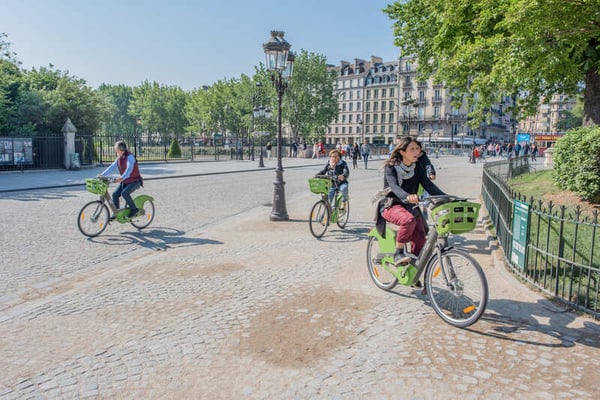Sustainability should be treated as a key issue in the cities of the future. Many of today's urban development projects lack the necessary sensitivity to achieve sustainable development, so that entire neighbourhoods may end up being devalued in the near future because they do not take into account key aspects such as habitability, self-sufficiency, integration and respect for the environment, new technologies or local and proximity commerce.
Cities occupy only 3% of our planet's surface area, but account for 70% of the total CO2. They therefore have a central role to play in reducing greenhouse gas (GHG) emissions and future carbon neutrality.
It is necessary to rethink the concept of urban planning and mobility, adopting measures on an urban scale that prioritise proximity models and combine a variety of uses (residential, offices, restaurants and hotels, commerce, etc.). Moreover, in the design of these "cities of the future", citizen participation is essential, contributing proposals, participating in decision-making and understanding their habits.
The problem of cities, the big emitters
According to studies that have inventoried the world's 170 largest cities in 50 countries, including 25 megacities (metropolitan areas with more than 10 million inhabitants), cities produce 52% of GHG emissions. The large metropolises, especially Chinese (led by Handan and Shanghai) but also from Russia (Moscow) and Japan (Tokyo), are the main generators of emissions, where household and industrial electricity consumption and transportation are the main sources.
Cities Betting on Change
Our cities offer great opportunities for improvement in terms of urban planning and in aspects such as distribution, dispersion to the suburbs or non-polluting means of transport. An example is the proximity city model implemented in Paris. In the "15-minute city", all basic services are within a maximum distance of 5 or 6 kilometres on foot or by bicycle.
A concept of city-centric and based on the "local" that other cities such as London have already adopted, according to Forbes magazine. The urban planning and mobility model is restructured, reducing cars along with the space allocated to them. This leads to a considerable reduction of greenhouse gases as well as noise pollution

Thus, they become cities with less noise and more green spaces that mitigate the heat island effect. In our country, Madrid Nuevo Norte is the largest Spanish urban project, as it covers more than 230 hectares and is the first project to obtain the BREEAM ES Urbanism 2020 pre-certificate, an international sustainability seal. Thus, it has become one of the most innovative actions in Europe in terms of urban sustainability and an international benchmark in sustainable urban development.

Renovation of the real estate stock: reducing consumption, incorporating renewables and centralising services
The reorganization on an urban scale is a way to reduce traffic and provide comfort to the inhabitants, but, on the other hand, there are the buildings. The majority still use fossil fuels to meet their energy needs. Replacing these energies with renewable sources, while retrofitting and constructing low or near-zero energy buildings in line with new European regulations, are key mechanisms to make our building stock more sustainable, energetically efficient and resilient.
The incorporation of renewable sources is not always possible in the building itself. Therefore, the construction of district heating networks (district energy plants) that provide buildings with green energy should also be considered. These are centralised plants that cover the demand for heating, DHW, and cooling for entire neighbourhoods. They usually take advantage of renewable energies available in the local environment, minimizing the energy use of fossil fuels. These district heating and cooling networks allow:
- Reduction of Greenhouse Gases (GHG).
- Reduced energy and maintenance costs.
- Saving space on roofs, facades and technical rooms by eliminating air conditioning units, chimneys or other individual HVAC equipment.
- Vibration and noise elimination.
- No visual impact.
- Security and guarantee of supply.
These are some of the main actions to be adopted at the urban scale in our neighbourhoods and cities. Urban areas play a key role in reducing emissions. All these actions will be indispensable if we are to achieve global carbon neutrality by 2050, pursuing a combination of social change, behavioural change and sustainable development. Designers, promoters, and other planning agents, as well as citizens with their daily decisions, can reshape the design of our cities and "build" friendlier cities for everyone: the cities of the future.


